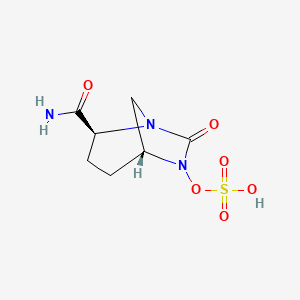RedHill Biopharma Ltd. (Nasdaq: RDHL) (Tel-Aviv Stock Exchange: RDHL) (“RedHill” or the “Company”), a specialty biopharmaceutical company primarily focused on the development and commercialization of proprietary drugs for the treatment of gastrointestinal diseases, announced that the U.S. Food and Drug Administration (FDA) has approved Talicia (omeprazole magnesium, amoxicillin and rifabutin) delayed-release capsules 10 mg1/250 mg/12.5 mg for the treatment of Helicobacter pylori (H. pylori) infection in adults. RedHill expects to launch Talicia1 in the U.S. in the first quarter of 2020 with its dedicated sales force.
Talicia is the only rifabutin-based therapy approved for the treatment of H. pylori infection and is designed to address the high resistance of H. pylori bacteria to current clarithromycin-based standard-of-care therapies. It is estimated that H. pylori resistance to clarithromycin more than doubled between 2009-2013.
Professor David Y. Graham, MD, MACG, Professor of Medicine, Molecular Virology and Microbiology at Baylor College of Medicine, Houston and Lead Investigator of the Talicia Phase 3 studies, said: “Talicia offers patients a much-needed new treatment option for H. pylori with an excellent safety and efficacy profile that is not compromised by clarithromycin or metronidazole resistance. The clinical studies for Talicia demonstrated high efficacy in eradication of H. pylori. Studies with Talicia found zero resistance to rifabutin and showed 17% resistance to clarithromycin, a current standard-of-care macrolide antibiotic, consistent with current data showing that clarithromycin-containing therapies fail in approximately 25-40% of cases.”
Colin W. Howden, MD, AGAF, FACG, Hyman Professor of Medicine & Chief of the Division of Gastroenterology, University of Tennessee Health Science Center, added: “H. pylori is a major cause of peptic ulcer and gastritis. It is also carcinogenic and is the leading cause of gastric cancer. Treatment of H. pylori infection has become increasingly difficult due to growing bacterial resistance and the lack of advances in treatment options over the past decade. Talicia offers a new effective treatment option to overcome bacterial resistance and provide optimal efficacy and I believe it could become a recommended first-line standard-of-care treatment for H. pylori infection.”
“The FDA’s approval of Talicia demonstrates our unwavering dedication to patients suffering from gastrointestinal diseases. We thank the patients, researchers and clinical staff who participated in the studies of Talicia and the RedHill team and vendors for this important milestone achieved by their commitment and hard work,” said Dror Ben-Asher, Chief Executive Officer of RedHill Biopharma. “We are working to expand our sales force to approximately 140 representatives who will promote Talicia, Aemcolo and other gastrointestinal-focused products in our basket.”




